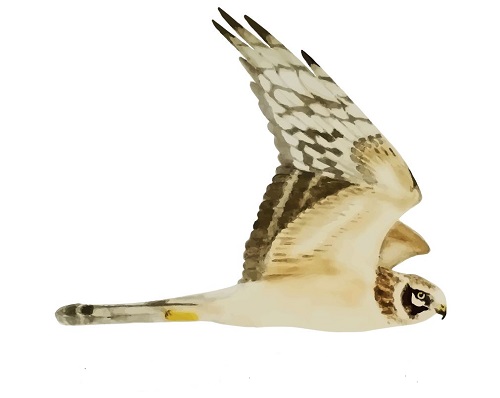Her på Skagen Fuglestations blog bringes korte nyheder i dagbogsformat om hændelser på fuglestationen.
I've Never Seen So Many Great Tits
The weather has been unsettled all week and yet again it was too rainy to start the count or the ringing at the usual times. We enjoyed having some extra time, but the rain let up around 9 and Florian and I were able to head to World’s End 3. There had been some discussion about whether to count at Nordstrand, where Knud was going, or back to World’s End 3. Nordstrand is very good in southeastern winds, as it provides good shelter and birds migrate very close to the shore. World’s End 3 is much more exposed, so you can see more but there is more wind. It does provide better opportunities to count passerines and there are more birds resting on the shoreline.
We were also interested to see how the two sites would compare in the same conditions. Just as we were getting on our bikes, we heard Knud call out White-billed Diver (Dansk: Hvidnæbbet Lom, American English: Yellow-billed Loon). This is quite a nice bird, though we have seen a couple recently. Activity was good as soon as we arrived at World’s End 3, and we saw a large loon that could have been a Great Northern Diver (Dansk: Islom, American English: Common Loon), though we didn’t see it well enough to be sure. However, in the next hour another large diver (lom) flew by and we were able to identify it as a Great Northern (Islom)! There were also many Snow Buntings (Snespurv) flying around and resting on the beach. With so many around we were both carefully checking the flock for Lapland Buntings (Dansk: Lapværling, American English: Lapland Longspur). While they were flying we noticed an all-brown bird, but unfortunately the flock was flying out over the sea and we lost sight of it. A bit later, Florian pointed out a scoter (sortand) that had a lot of orange on the bill, like a Black Scoter (Amerikansk Sortand). Right after, I noticed the flock of Snow Buntings had returned to the beach. I quickly scanned them and was able to find the brown one, it was a Lapland Bunting! They used to be quite common here, but have gotten increasingly rare in recent years, so it is quite exciting to see one!
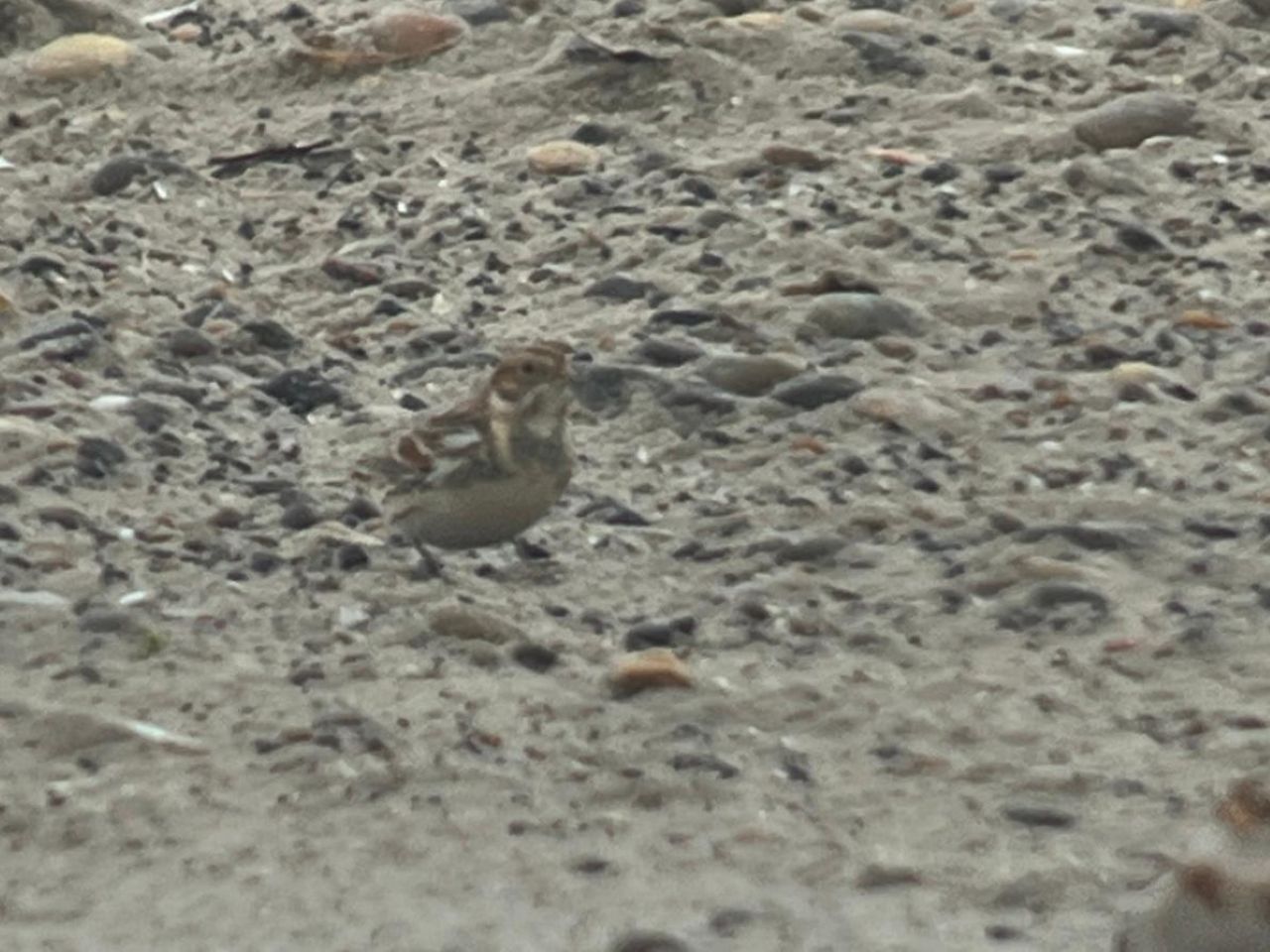
Lapland Bunting (Dansk: Lapværling, American English: Lapland Longspur) at Grenen. Photo by Florian
The ringers (Sarah, Mara, and Amira) had a slow start to the morning. They tried to open nets a bit before 9, but it was still raining and they turned back before they reached the bikes. Despite thinking they would not catch very much, they went back out later and were able to open most of the nets. It ended up being very worthwhile, as the weather held for most of the day and they caught a crazy number of Great Tits (Musvit)! There were 63 in total, perhaps the best day for them since the start of the station. They also caught 49 Blue Tits (Blåmejse) including one that had a fat score of 8! This is exceptionally high, because the more fat birds amass, the more they have to carry around, potentially affecting their flight and making predation more likely.
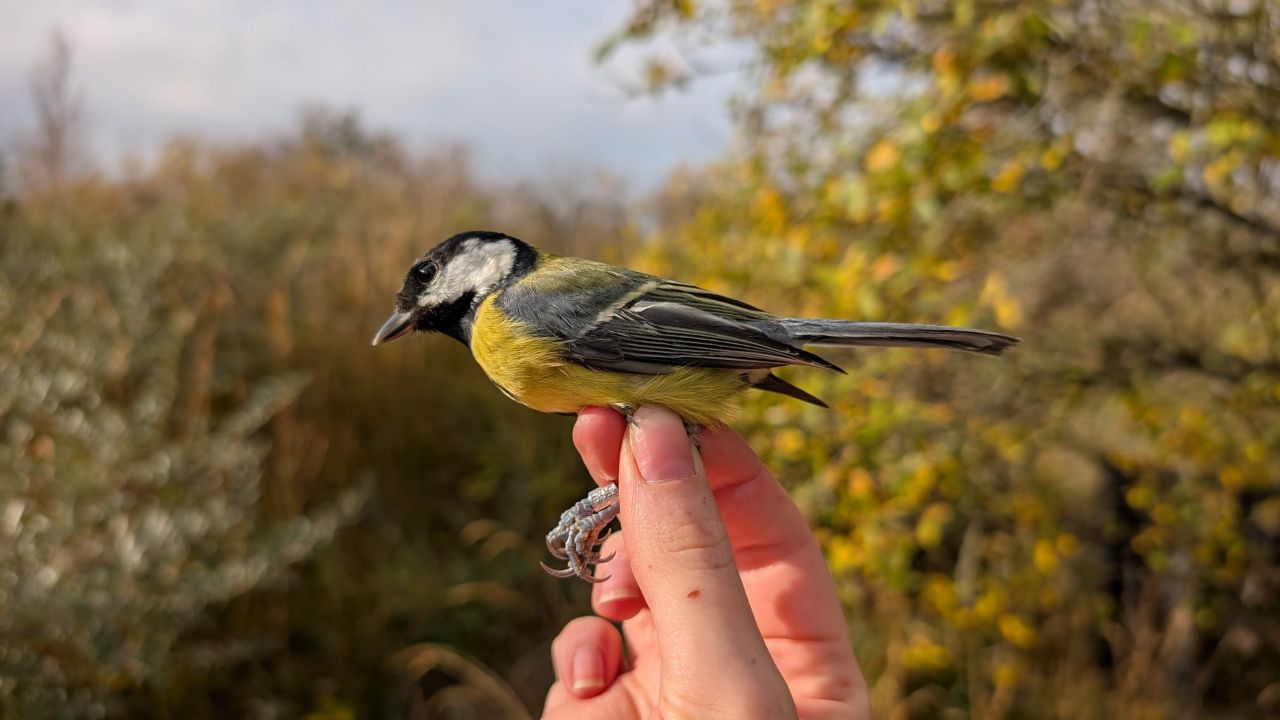
One of many Great Tits (Musvit) ringed at Kabeltromlen today. Photo by Mara
During the count, Florian and I saw a strange-looking pipit fly by, so afterward, we went to look for it in the brush west of World’s End 3. We were just looping back when we got a call from the ringers that they could use some extra help and that they had caught a Siberian Chiffchaff (Sibirisk Gransanger). This is a subspecies of Common Chiffchaff (Gransanger), which breeds in Taiga from the Ural Mountains eastward in Russia. The station generally catches at least one per year and they are maybe the least interesting of the ‘Siberian birds’ but still cool to see!
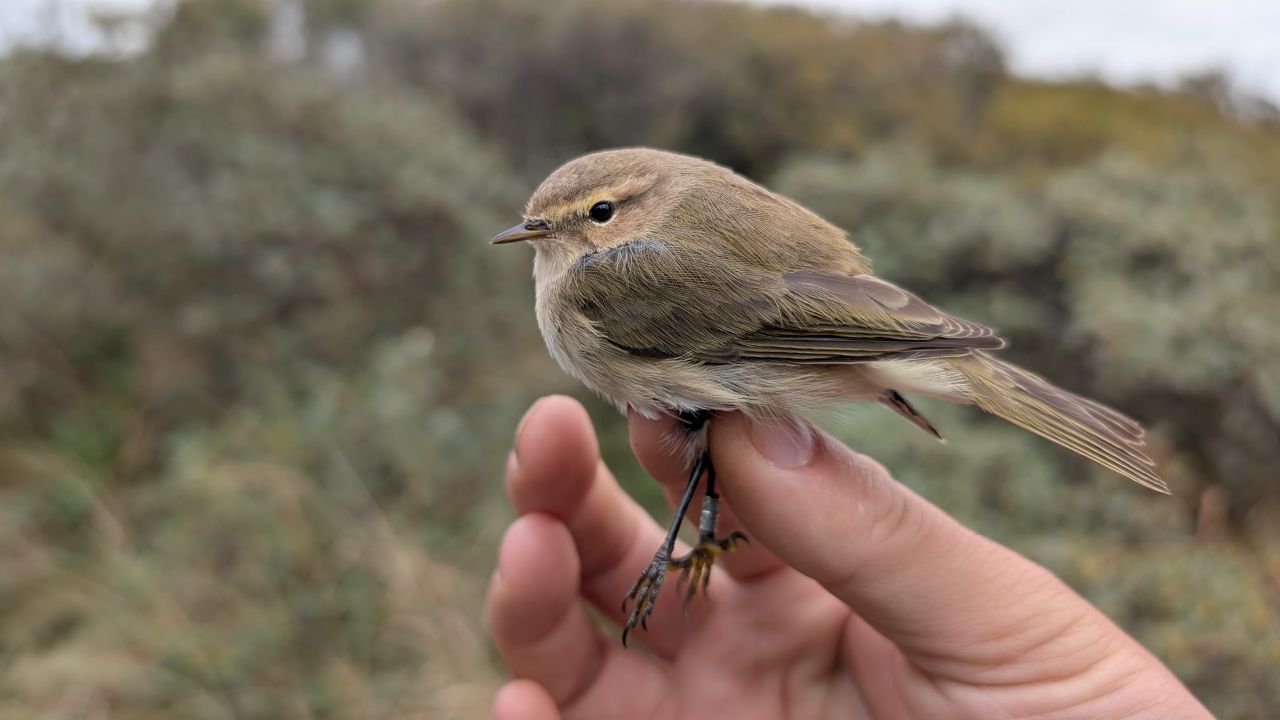
Siberan Chiffchaff (Sibirisk Gransanger) ringed at Kabeltromlen today. Photo by Mara
After getting back from the ringing in late afternoon, Amira cooked us a tasty gnocchi dinner, while Sarah and I took a refreshing dip in the sea. Later in the evening, Sarah and I went out night catching and had several close run-ins with Snow Buntings before eventually catching a Jack Snipe (Enkeltbekkasin). The Snow Buntings were quite flighty, but it was exciting to see them and gives us hope of catching one in the coming days.
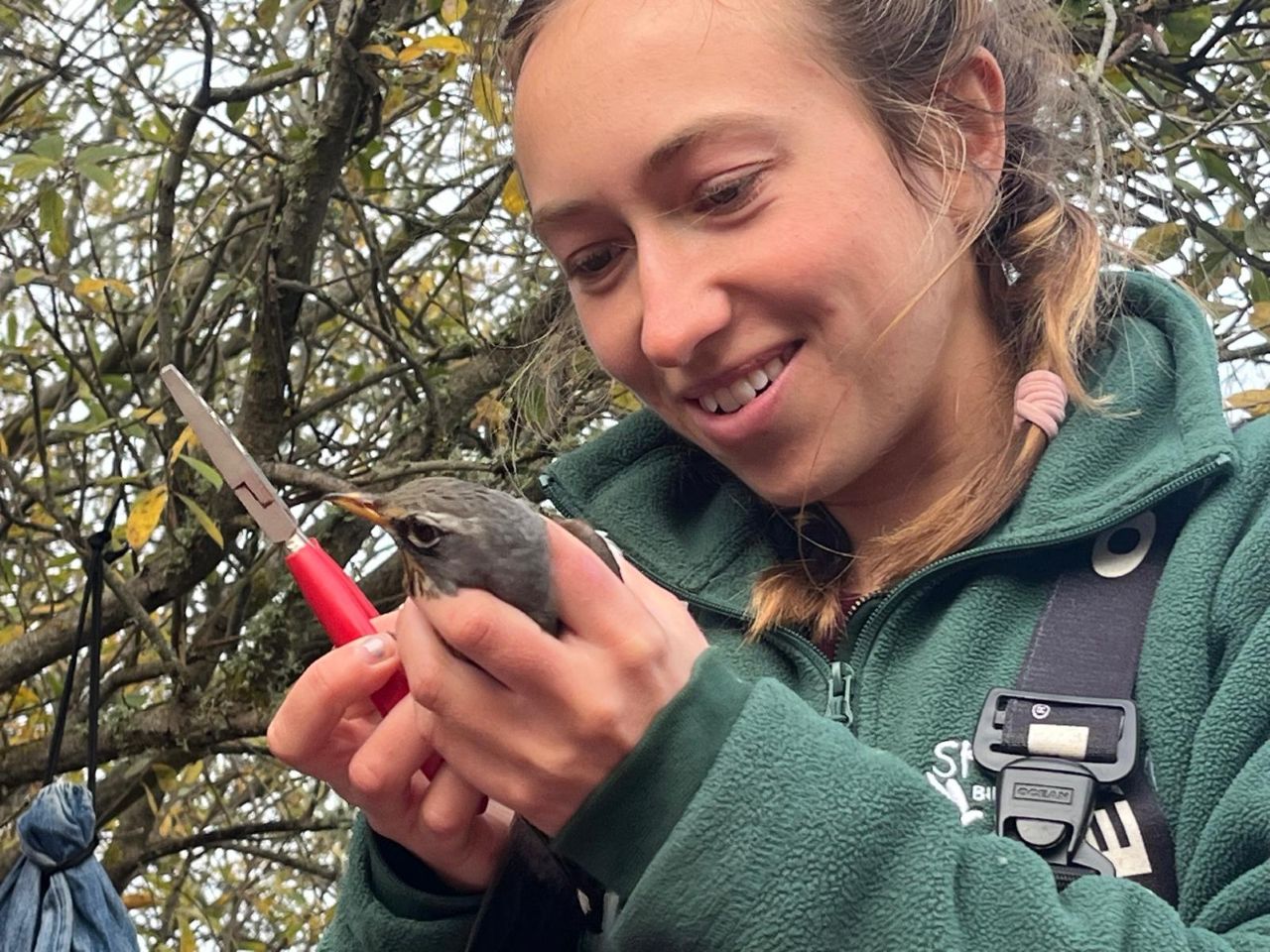
Sarah ringing a Fieldfare (Sjagger) this afternoon. Photo by Miles
Ringing (Kabeltromlen):
Highlights from World’s End 3:
People: Mara Glane, Florian Hatt, Sarah Partridge, Amira Nuseibeh, Miles Scheuering, Knud Pedersen, Simon S. Christiansen and our guest Lars
